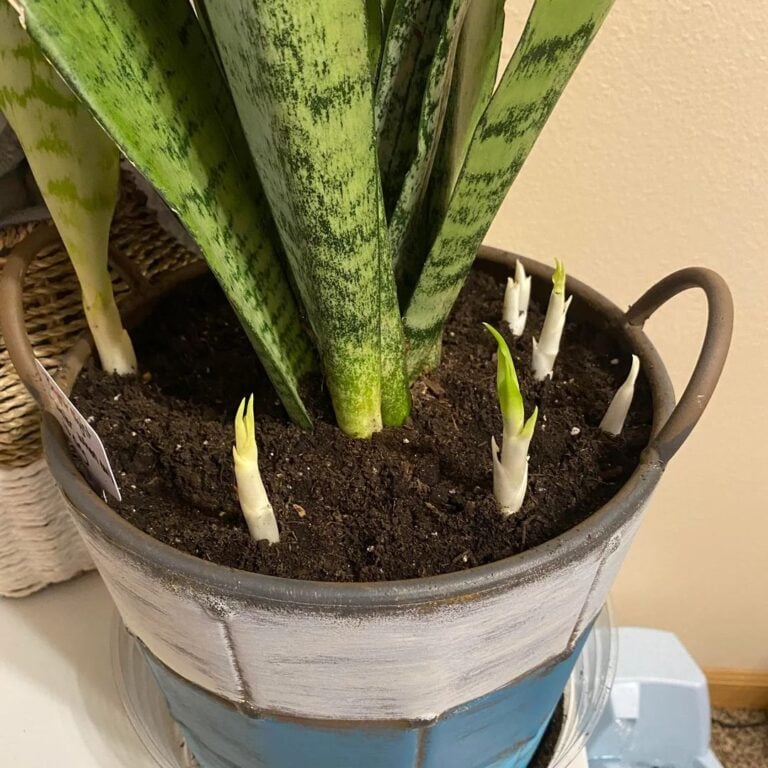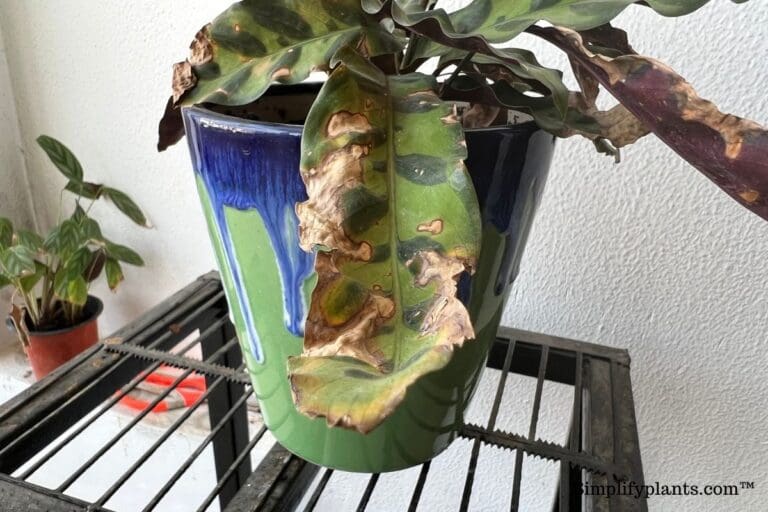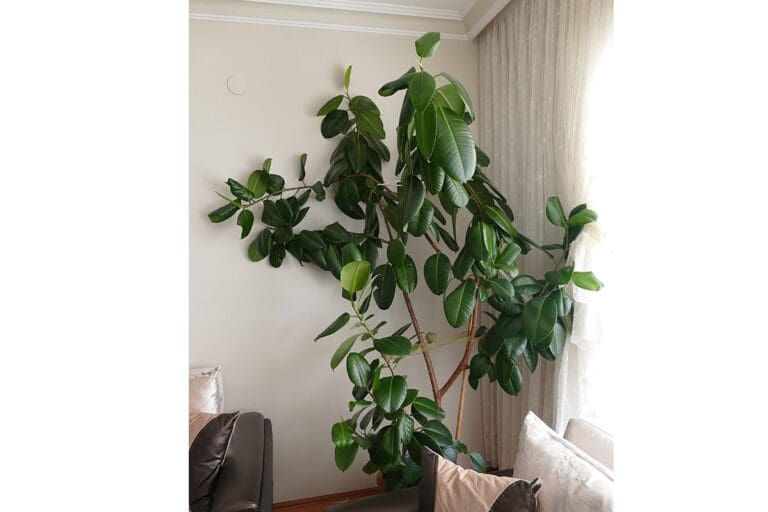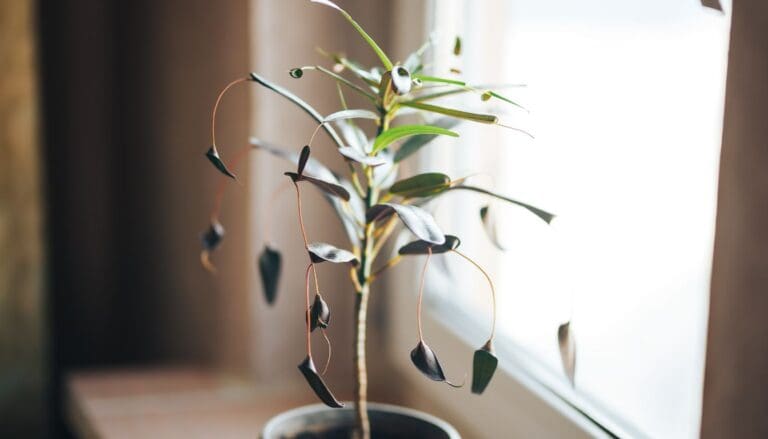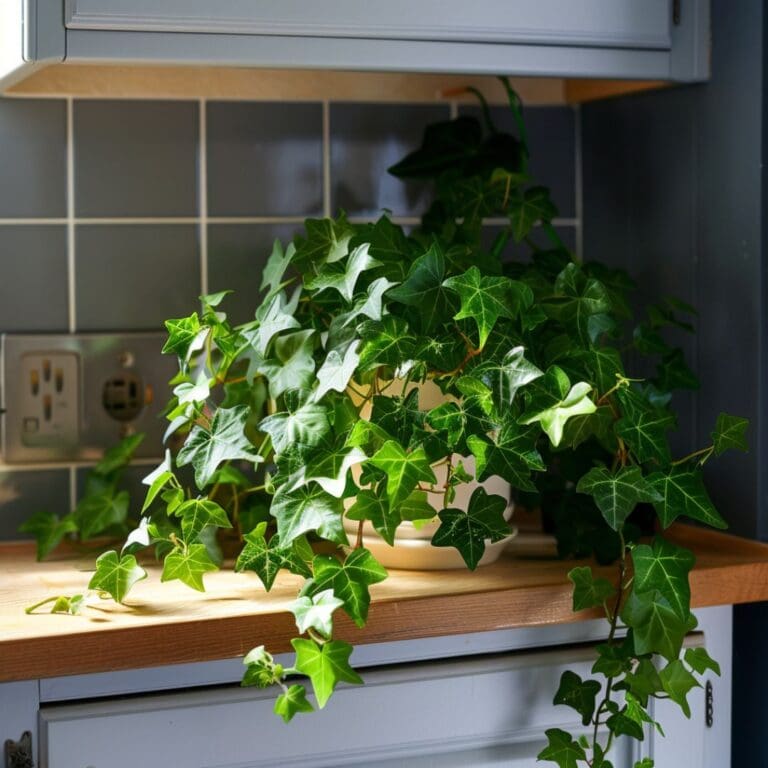Boston Fern Sunburn: Signs, Causes & How To Fix
Boston fern is a popular houseplant and is mostly known for its air-purifying ability. This plant can tolerate low light conditions but not when the light is direct and intense.
But the main question is, how will you know whether your plant is getting excessive light? And how can you fix the same?
Boston fern prefers bright indirect sunlight to thrive, and if it gets direct sunlight, it will develop brown spots leading to crisp sunburned leaves. To fix the sunburned Boston fern, prune the damaged leaves, keep the plant in a shadier spot, and mist your plant to increase the humidity.
Boston fern plants are very sensitive to direct sunlight, so even a little or sudden exposure can cause sunburn.
If your Boston fern is sunburned, then in this article, I will help you solve this problem by discussing all the possible ways of recovery and prevention.

Please note: Simplify Plants is reader-supported. Some links in the post are affiliate links and I get a commission from purchases made through links in the post.
Can a Boston fern get too much sun?
Keeping your Boston fern outside or near an open window where the plant receives intense sunlight can cause sunburn.
Boston fern is quite different from other indoor plants because they cannot tolerate even a little bit of direct sunlight, so you should be careful while considering its lighting requirements.
When the plant is exposed to direct sunlight at first, you will be able to see the upper surface of the leaves starting to fade away.
Now let us discuss other signs of sunburn on your Boston fern plant:
- Yellow or brown spots on the leaves.
- Huge white spots on the leaves.
- Brown, crisp and curly edges.
- Scorch or brittle leaves.
- Leaves dropping
- Stunted growth
- No new growths
- Holes in the foliage
If you notice any of these signs, you should immediately take action to save the plant from further sunburn.
Why does my Boston fern look burnt?
There are mainly four reasons that can cause or elevate the sunburn condition of your Boston fern plant.
- Prolonged exposure to direct sunlight
- Sudden exposure to direct sunlight
- High temperatures
- Poor water quality
Let’s understand.
Prolonged exposure to direct sunlight

Boston ferns are intolerant to direct sunlight.
So prolonged exposure can cause serious damage to them.
If your Boston fern is getting direct sunlight for too long without interruption, the leaves will turn brown and crisp, indicating sunburn.
Keeping your plant to direct sunlight for an extended period will make the soil dry faster, leading to dehydration.
This makes the plant weak, and it stops functioning properly.
Prolonged exposure can cause damage to the foliage’s cells and destroy chlorophyll and necessary photosynthetic pigments.
This directly affects the plant’s health, and it may not even survive if not treated on time.
Also read: What Kind Of Lighting Does A Boston Fern Need?
Sudden exposure to direct sunlight
If the plant grows in a comfortable environment, even a slight change can make a huge difference in its health.
Suddenly introducing the Boston fern from low light to bright direct sunlight can be very shocking for the plant and can cause sunburn to them.
Sudden exposure also happens when you bring the plant home from the nursery.
Generally, the plant fails to get its perfect growing conditions at home as it was getting in the nurseries, making it difficult to adjust.
Shifting the plant’s location frequently causes sudden temperature fluctuations, so even a little direct sunlight can become very harsh for your Boston fern.
High temperatures

Boston ferns need a moderately warm temperature to grow well.
But when the temperature is very high for the plant, it directly affects its health.
The heat coming from the direct sunlight is considered very harmful to the houseplants.
The temperature rises gradually when the plant is exposed to direct sunlight, which adds more to sunburn.
When your Boston fern receives direct sunlight along with high temperatures, it affects the plant more severely and worsens the sunburn.
Poor quality water
If your Boston fern is getting poor water quality, the plant can frequently get sunburn.
Poor water quality, such as tap water containing hard minerals like chlorine, sodium, iron, etc., damages the leaf’s cells.
When the leaf’s cells are damaged, the cuticles that protect the leaves from intense sunlight become extremely thin and weak.
Weak cuticles fail to protect the leaves, so even slight exposure to direct sunlight becomes extremely harmful for your plant, which is why it can easily get sunburn.
Also read: How To Water Boston Fern? (How Often, How Much & More)
How do you revive a sunburned fern?

To fix your Boston fern from sunburn, you need to provide the plant with proper care.
You will not see any sudden recovery as it takes time.
Be patient and follow the steps given here.
Now, let us discuss all the solutions:
- Cut all the dry and damaged leaves from your Boston fern: Pruning allows the plant to grow healthy and bushy. Not doing it on time can lead to stunted growth.
- Relocate your plant to a shadier area: If you have kept your Boston fern on the patio or in the garden, bring it back to the house or provide shade. This will relieve your plant to some extent.
- Reduce watering when the plant is sunburned: The sunburnt plant loses all of its leaves, so it doesn’t need that much water until it has developed new leaves again.
- Don’t completely stop watering your Boston fern: Make sure you keep the soil moist otherwise, the plant can experience underwatering.
- Stop fertilizing your Boston fern for a while until it recovers: Let it develop new leaves. The plant already stays weak, so fertilizing can make the condition worse.
- Mist your Boston fern to cool it: This provides comfort to your plant from direct sunlight and protects the plant from burns.
- Don’t ever introduce your Boston fern to a completely new bright environment suddenly. Always do this gradually. Give some time for your plant to adjust to the environment before making a harsh change.
How to prevent sunburn in Boston fern?

Once your Boston fern is sunburnt, it becomes difficult to bring the plant back to normal health.
It is best to prevent the plant from sunburn.
For preventing this, you just need to understand the light requirements of your Boston fern plant.
Once you know what is best for your plant, you can easily keep the plant away from health problems.
Let us discuss the ways to prevent Boston ferns from getting sunburned.
- Boston fern loves to thrive in indirect light so keep the plant in a spot where it will not receive direct light or heat from the sun.
- Keep the plant near a window that is either facing east or north. The light in these directions will not be too harsh.
- Water your plant from time to time to keep the soil moist. Water helps absorb the heat, preventing the plant from getting sunburned easily.
- You should keep misting your Boston fern to provide humidity. A humid environment provides relief to the plant from high temperatures.
- The ideal temperature for Boston is 60-75°F. If the temperature goes higher than that, your plant can undergo problems. So try to maintain the proper temperature inside the house.
How to care for a Boston fern?
Here are various tips to help your Boston fern plant stay healthy and save the plant from sunburn.
Try to understand the light requirement.
To avoid sunburn on your Boston fern, you have first to understand the proper light requirement of the plant.
You have to keep 2 things in your mind to provide the plant with suitable light:
Light intensity

Don’t keep your plant near a south-facing window because the light has the highest intensity in that direction.
Even if you keep it there, provide shade to filter the light or keep the plant at least 5-6 feet away from the window.
The best spot for Boston fern is near the East or North-facing window because in these areas, the light intensity is low, and it will not cause any harm to your plant.
Light duration
Boston ferns don’t like to be exposed to sunlight for too long, especially when the light is intense.
Boston fern needs only 2-3 hours of bright indirect sunlight per day during fall and winter to thrive.
The requirements change during the summer and spring months when the sunlight is more intense.
Try to provide as much light as the plant needs and don’t exceed the duration to avoid getting a sunburn on your plant.
Choose the correct spot
You should choose the correct spot for your plant to keep it away from the sun’s direct heat.
Choose a suitable spot for your Boston fern where they will get enough indirect light every day.
Areas with low light or shadier spots are considered the best for these plants.
Place the plant in an area where light is not too intense and provide shade by using a net or sheer curtains to filter the direct light.
Also read: What Kind Of Pot Is Best For a Boston Fern? (Size, Material & More)
Provide enough water to your plant.

If your Boston is receiving insufficient water, it can experience sunburn frequently.
You should water your plant efficiently and on time without any delay.
The best time to water your plant is during the morning.
The ability of the plant to absorb water is more in the mornings.
Always keep the soil moist and make sure you neither underwater nor overwater your plant.
Avoid using tap water and provide the plant with distilled or rainwater instead.
Maintain correct humidity
You should maintain humidity around the Boston fern to save it from harsh sunlight and keep the plant away from sunburn.
- You should mist the plants every 2-3 days to provide moisture around them.
- You can use pebble trays to raise humidity among the plant. Put pebbles in the tray and then fill it with water. After that, place your Boston into the tray. Water vapor coming out from the trays will help to increase humidity.
- Grouping other plants together with your Boston fern can also help.
- You can also use a humidifier device to increase the humidity.
Mulch the soil surface
Mulching protects the soil surface from the direct heat of the sun.
You should mulch the soil surface to keep the soil moist for a longer period and protect the plant from sunburn.
When you notice that the soil surface is getting dry and compact, then mulching can help the soil retain more moisture, and also, the plant can stay hydrated for an extended period.
Shredded barks do best as a mulch for your Boston fern.
So try to use that.
Prune your Boston fern

You cannot fix the already dry or damaged leaves and stems, so it is best to prune those parts.
If you want to fix your Boston fern from sunburn quickly, then pruning is the first and mandatory step.
If you do not prune your Boston fern on time, then the damaged leaves or stems will not let the plant grow further, and also the plant’s growth will get stunted.
Use sharp and sterilized scissors or pruners to eliminate the damaged parts.
Always try to do the sharp cut; otherwise, the plant can get stressed.
Prune your plant frequently for fast plant recovery and encourage new and healthy growth.
Use artificial light as an alternative.
If you notice that the temperature is extremely high outside and even indirect sunlight is too bright for the plant, you can use artificial light.
If you think that artificial light doesn’t work the same as natural light, you are wrong because artificial light is one of the best options for your houseplants.
During harsh sunlight or high temperatures, bring your Boston fern inside the house for a while and use artificial lights to meet the correct light requirement for the plant.
Final words
Boston ferns getting sunburned is a common concern. Even a slight exposure to intense sunlight can damage your Boston fern. If you look after your plant properly and carefully take care of each factor, you can easily prevent sunburn.
Never introduce your Boston fern to direct sunlight and sudden changes. If you want to give your plant more light, do this slowly. If the plant is sunburned, move it to a shadier spot or cover it with a shade.
Water the Boston fern thoroughly, cut all the damaged parts, and avoid fertilizing to fix your Boston fern.
Reference: University of Florida, The University of Arkansas Division, Texas A&M University System, The University of Georgia, University of New Hampshire, Wikipedia, The Royal Horticultural Society.
Recommended Garden Supplies
| Product Image | Our Recommended Gardening Supplies | Check Offers! |
|---|---|---|
Top Top
Top
Top
Top
Top
Top
Top
Top | rePotme Houseplant and Tropical Classic Potting Soil Mix | Check Offer On Amazon |
 Top
Top
Top
Top
Top
Top
Top
Top | Espoma Organic Indoor Plant Food | Check Offer On Amazon |
 Top
Top
Top
Top
Top
Top
Top
Top | GooingTop LED Grow Light 6000K Full Spectrum Clip Plant Growing Lamp | Check Offer On Amazon |
 Top
Top
Top
Top
Top
Top
Top
Top | Soil Moisture Meter | Check Offer On Amazon |
 Top
Top
Top
Top
Top
Top
Top
Top | Govee Hygrometer Thermometer, Bluetooth Enabled! | Check Offer On Amazon |
 Top
Top | LEVOIT Humidifiers for Large Room(Best For Plants) | Check Offer On Amazon |
 Top
Top
Top
Top
Top
Top
Top
Top | Upgraded DIY Automatic Drip Irrigation Kit, 15 Potted Houseplants Support | Check Offer On Amazon |
 Top
Top
Top
Top
Top
Top
Top
Top | Stainless Steel Heavy Duty Gardening Tool Set | Check Offer On Amazon |
 Top
Top
Top
Top
Top
Top
Top
Top | Bonide Insecticidal Soap | Check Offer On Amazon |
 Top
Top
Top
Top
Top
Top
Top
Top | Bonide 32 oz Spray Neem Oil for Organic Gardening | Check Offer On Amazon |
 Top
Top
Top
Top
Top
Top
Top
Top | Garden Safe Fungicide | Check Offer On Amazon |

